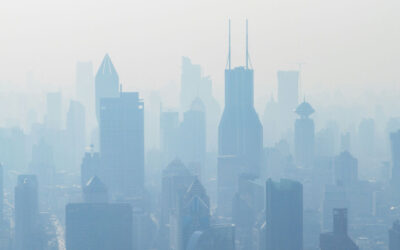In an era overshadowed by the spectre of climate change, the convergence of environmental shifts and human health demands our utmost attention. The World Health Organization has unequivocally declared climate change as the preeminent threat to health in the 21st century, emphasizing its far-reaching implications for physical, mental, and socio-economic well-being. As we navigate the intricate interplay between climate change and health, it becomes imperative to scrutinize how vulnerable populations shoulder the disproportionate burden of its adverse effects and how innovative solutions like moringa can serve as beacons of resilience and security.
Direct Health Effects
The inexorable rise in the frequency and severity of extreme weather events serves as a poignant reminder of climate change’s direct onslaught on human health. Heatwaves, floods, and wildfires, exacerbated by escalating temperatures, pose existential threats to vulnerable demographics such as children, pregnant women, and the elderly. These calamities precipitate heat stress, dehydration, injuries, and displacement, exacerbating mental health challenges and triggering societal upheaval.
Indirect Health Effects
Beyond the immediate cataclysm of extreme weather events, climate change begets a cascade of indirect health ramifications. Deteriorating air quality, propelled by mounting air pollution and wildfire smoke, precipitates respiratory ailments and cardiovascular diseases. Shifts in temperature and precipitation patterns foster the proliferation of infectious diseases, extending their geographic reach and ensnaring unsuspecting communities in their grasp. Moreover, disruptions in agricultural production and compromised food and water security cast a pall of malnutrition and waterborne illnesses, further imperilling vulnerable populations.
Socio-Economic Impact
The reverberations of climate change echo far beyond the realm of health, permeating the economic and social fabric of societies. Adverse economic repercussions, including heightened unemployment and financial strain, afflict certain segments of the populace, exacerbating pre-existing disparities and amplifying social inequities. Vulnerable communities, particularly those dwelling in rural hinterlands and marginalized urban enclaves, grapple with limited access to healthcare and essential services, heightening their susceptibility to climate-induced health crises.
Identifying Vulnerable Populations
A nuanced understanding of vulnerable populations is indispensable in sculpting targeted interventions and bolstering resilience against climate-related health hazards. Children, pregnant women, older adults, individuals with pre-existing medical conditions, and marginalized communities emerge as frontline protagonists in the battle against climate-induced health disparities.
Conclusion
As we teeter on the precipice of a climatic precipice, the clarion call for action reverberates with unprecedented urgency. moringa, an avant-garde platform in climate-resilient health insurance, emerges as a harbinger of hope in shielding vulnerable populations against the ravages of climate change. By harmonizing proactive risk management strategies with the imperatives of health equity, moringa empowers insurers to navigate a trajectory towards resilience, adaptation, and collective well-being. As we embark on this transformative odyssey, let us galvanize our collective resolve, bridging the chasm between climate change and health equity, and heralding a brighter, more sustainable future for all.
Reference: Better Health Victoria – Climate Change and Health
Image Credits: Johannes Plenio on Pexels






